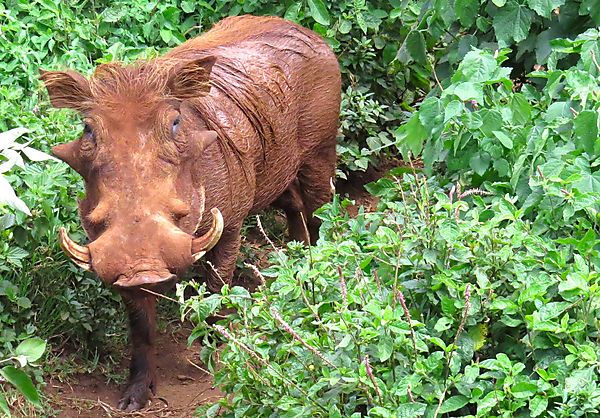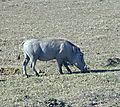Warthog
Parent page
On this page
Introduction to Warthogs
Description and Characteristics
A member of the pig family warthogs are black, grey or brown in colour, with dark mane and tail; white cheek whiskers. Their bodies are covered with sparse coarse bristly hair. They have a long face with fleshy warts and protruding tusks.
Warthogs are sociable animals and are usually found in groups consisting of 1 or 2 sows and young offspring. Males (boars) usually travel alone. Boars have more prominent warts than sows. They are primarily used to protect the face during fights.
Warthogs use burrows for shelter and when entering, the warthog backs in enabling them to defend themselves. In the mornings, warthogs burst out of their burrows at top speed to get a running start on any predators that may be lurking nearby.
Although they look fierce, warthogs would rather run than fight. But they can be fierce opponents if forced.
Feeding/drinking Habits
Warthogs are grazers feeding mainly on grasses, roots, berries, bark, and occasionally carrion. Warthogs will travel up to 7 km a day in search of good food and water. Whilst grazing, they kneel on their front legs and even move around on their knees.
Habitat
They are found in most of Africa south of the Sahara and are widely distributed in East Africa. Usually found in savannah and lightly forested areas.
Size and Lifespan
Weighs 50 to 200 kg. 90 to 150 cms in length; standing between 64cm and 85.0 cm tall at the shoulder
Males are heavier and slightly larger than females. They live up to 15 years in the wild
Reproduction
Warthogs are seasonal breeders with the mating season taking place when the main rainy season ends. They reach sexual maturity at about 18 to 20 months but males generally do not begin mating until they are 4 years old. The gestation period is between 170 and 175 days. The young usually remain with the mothers for 2 years before venturing off to form their own families
Predators and Threats
Warthogs are not currently endangered but they are prey of lions, leopards, Spotted hyena, cheetah and Wild dog












